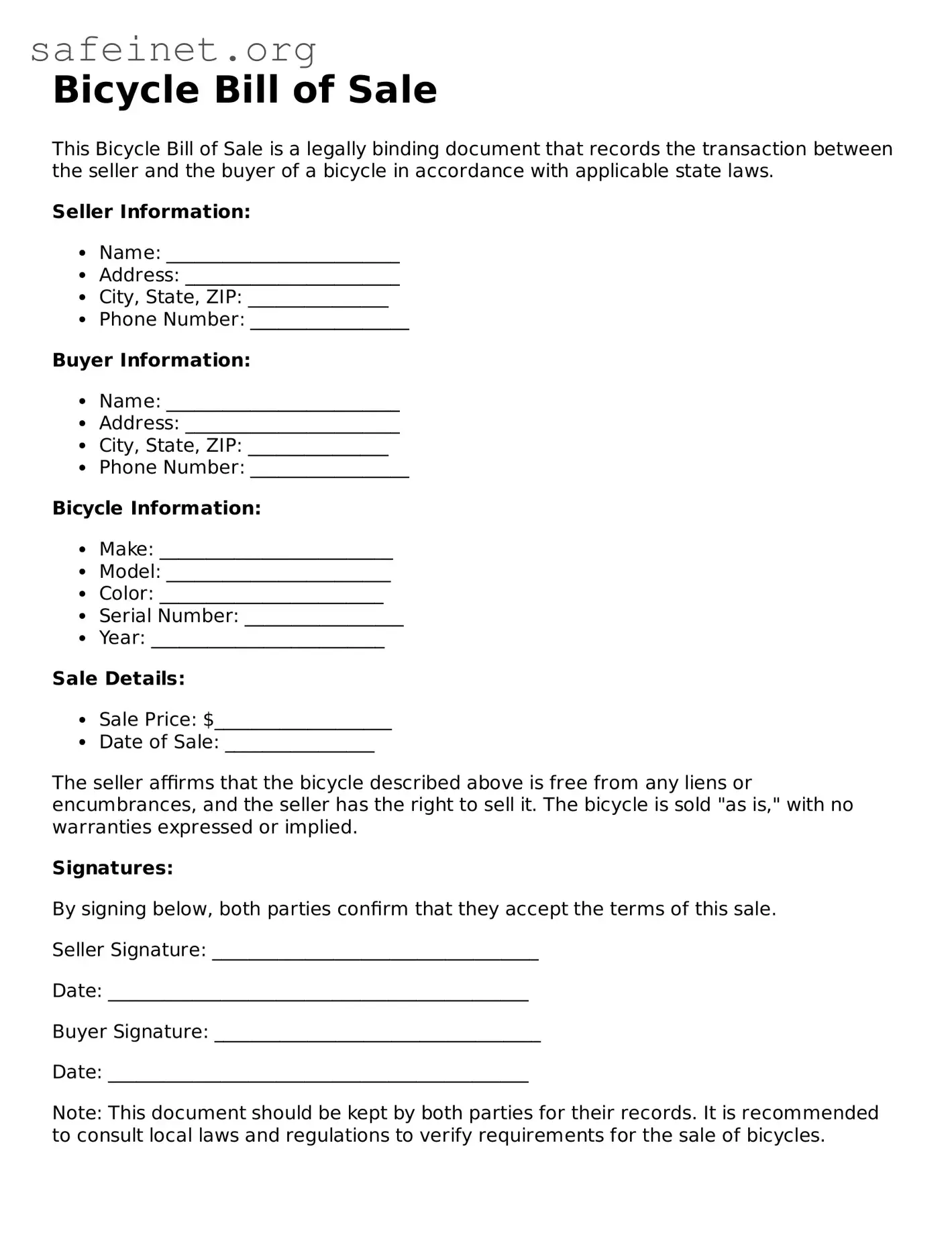What is a Bicycle Bill of Sale?
A Bicycle Bill of Sale is a legal document that outlines the transfer of ownership of a bicycle from one person to another. It serves as proof of the sale, detailing the specifics of the transaction such as the buyer, seller, bicycle description, and sale price. Having this document can protect both parties in case of future disputes regarding ownership or condition of the bike.
Do I need a Bicycle Bill of Sale for a private sale?
While it is not legally required in every state, having a Bicycle Bill of Sale is highly recommended for private sales. This document can help establish that the bicycle has been legally transferred and can be invaluable if questions about ownership arise later.
What information should be included in a Bicycle Bill of Sale?
Essential details include the buyer's and seller's names and addresses, the bicycle's make, model, color, and serial number. It's also important to include the sale price and the date of the transaction. Both the buyer and seller should sign the document to validate the sale.
Can I create my own Bicycle Bill of Sale?
Yes, you can create your own Bicycle Bill of Sale. Just be sure to include all necessary information and check for any specific requirements that may exist in your state. There are also many templates available online that can help guide you in drafting a comprehensive document.
Is a Bicycle Bill of Sale legally binding?
Yes, a Bicycle Bill of Sale is a legally binding agreement once both parties sign it. This document can provide evidence of the terms agreed upon during the sale, making it easier to resolve disputes if they should arise.
What if I lose the Bicycle Bill of Sale?
If you lose the Bicycle Bill of Sale, it can be challenging, but not impossible. It’s recommended that both parties keep a signed copy for their records. If a copy is lost, the parties might need to draft a new bill of sale, possibly with the help of a witness, to reaffirm the transaction.
How does a Bicycle Bill of Sale protect me?
This document protects both buyers and sellers by providing clear evidence of the transaction. For buyers, it confirms ownership and details the condition of the bicycle at the time of sale. For sellers, it can establish that they are no longer responsible for the bicycle, removing liability for future issues.
What if the bicycle was a gift?
If the bicycle was given as a gift, a Bicycle Bill of Sale is not necessary; however, creating a similar document can still be a good idea. This can help document the transfer for both parties, particularly if the bicycle has significant value or is collectible.
Can I use a Bicycle Bill of Sale for a trade?
A Bicycle Bill of Sale can be used to document a trade. In this case, it would outline the details of both items being exchanged. It’s important to note the value of both bicycles to clarify the terms of the trade.
Where can I get a Bicycle Bill of Sale form?
You can find Bicycle Bill of Sale forms online, often available for free. Local bike shops or community centers might also have templates. Just ensure that any form you choose complies with your state’s laws and includes all necessary information.
